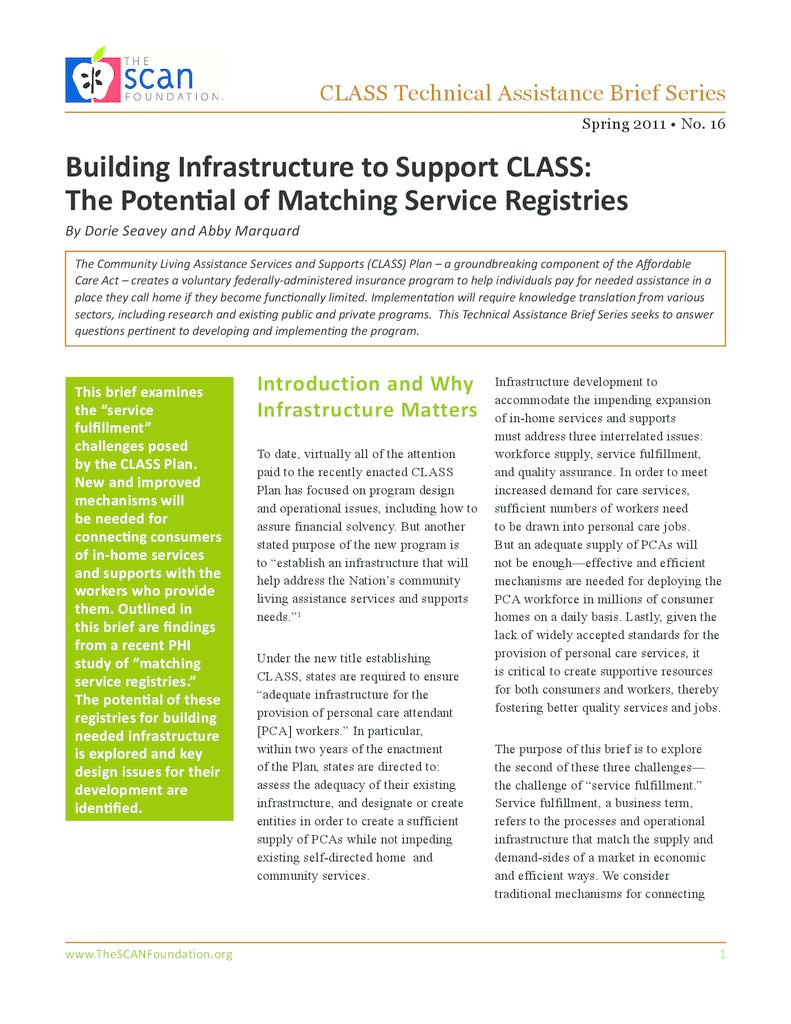Building Infrastructure to Support CLASS: The Potential of Matching Service Registries
summary
This policy brief examines the “service fulfillment” challenges posed by the CLASS Plan. New and improved mechanisms will be needed for connecting consumers of in-home services and supports with the workers who provide them.
Date Updated: 04/06/2011To date, virtually all of the attention paid to the recently enacted CLASS Plan has focused on program design and operational issues, including how to assure financial solvency. But another stated purpose of the new program is to “establish an infrastructure that will help address the nation’s community living assistance services and supports needs. Under the new title establishing CLASS, states are required to ensure “adequate infrastructure for the provision of personal care attendant [PCA] workers.”…
Download the publication for all visuals and complete references.
Continue Reading
This policy brief provides background on the historical development of benefit eligibility triggers in the private long-term care insurance market. Understanding how these triggers came into being can provide important information to those charged with implementing the CLASS Plan.
This policy brief provides information about how long-term care insurers implement benefit eligibility triggers in the private insurance market. The way in which companies have operationalized benefit eligibility triggers can inform the development of regulations for the CLASS Plan.
This policy brief provides information on the benefit eligibility assessment process in the private long-term care insurance industry. It focuses on how long-term care insurers use the information in the adjudication process, who is involved in the process, and how activities of daily living and cognition are assessed.


